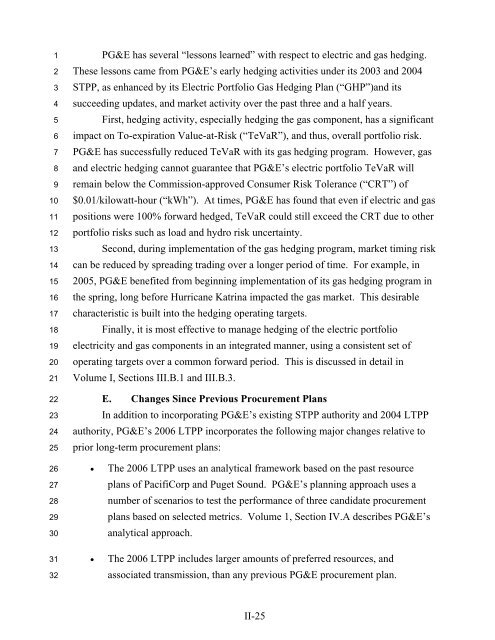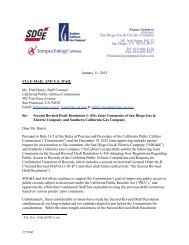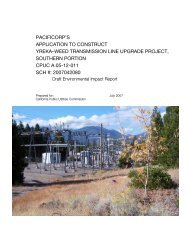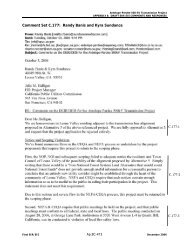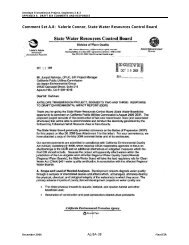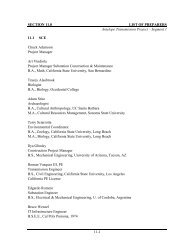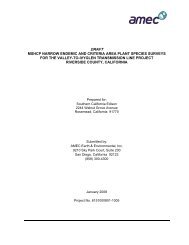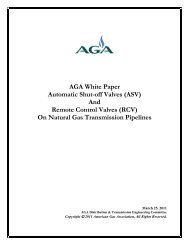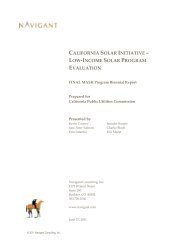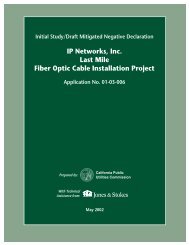Volume I. Part I - California Public Utilities Commission
Volume I. Part I - California Public Utilities Commission
Volume I. Part I - California Public Utilities Commission
You also want an ePaper? Increase the reach of your titles
YUMPU automatically turns print PDFs into web optimized ePapers that Google loves.
1<br />
2<br />
3<br />
4<br />
5<br />
6<br />
7<br />
8<br />
9<br />
10<br />
11<br />
12<br />
13<br />
14<br />
15<br />
16<br />
17<br />
18<br />
19<br />
20<br />
21<br />
22<br />
23<br />
24<br />
25<br />
26<br />
27<br />
28<br />
29<br />
30<br />
31<br />
32<br />
PG&E has several “lessons learned” with respect to electric and gas hedging.<br />
These lessons came from PG&E’s early hedging activities under its 2003 and 2004<br />
STPP, as enhanced by its Electric Portfolio Gas Hedging Plan (“GHP”)and its<br />
succeeding updates, and market activity over the past three and a half years.<br />
First, hedging activity, especially hedging the gas component, has a significant<br />
impact on To-expiration Value-at-Risk (“TeVaR”), and thus, overall portfolio risk.<br />
PG&E has successfully reduced TeVaR with its gas hedging program. However, gas<br />
and electric hedging cannot guarantee that PG&E’s electric portfolio TeVaR will<br />
remain below the <strong>Commission</strong>-approved Consumer Risk Tolerance (“CRT”) of<br />
$0.01/kilowatt-hour (“kWh”). At times, PG&E has found that even if electric and gas<br />
positions were 100% forward hedged, TeVaR could still exceed the CRT due to other<br />
portfolio risks such as load and hydro risk uncertainty.<br />
Second, during implementation of the gas hedging program, market timing risk<br />
can be reduced by spreading trading over a longer period of time. For example, in<br />
2005, PG&E benefited from beginning implementation of its gas hedging program in<br />
the spring, long before Hurricane Katrina impacted the gas market. This desirable<br />
characteristic is built into the hedging operating targets.<br />
Finally, it is most effective to manage hedging of the electric portfolio<br />
electricity and gas components in an integrated manner, using a consistent set of<br />
operating targets over a common forward period. This is discussed in detail in<br />
<strong>Volume</strong> I, Sections III.B.1 and III.B.3.<br />
E. Changes Since Previous Procurement Plans<br />
In addition to incorporating PG&E’s existing STPP authority and 2004 LTPP<br />
authority, PG&E’s 2006 LTPP incorporates the following major changes relative to<br />
prior long-term procurement plans:<br />
• The 2006 LTPP uses an analytical framework based on the past resource<br />
plans of PacifiCorp and Puget Sound. PG&E’s planning approach uses a<br />
number of scenarios to test the performance of three candidate procurement<br />
plans based on selected metrics. <strong>Volume</strong> 1, Section IV.A describes PG&E’s<br />
analytical approach.<br />
• The 2006 LTPP includes larger amounts of preferred resources, and<br />
associated transmission, than any previous PG&E procurement plan.<br />
II-25


